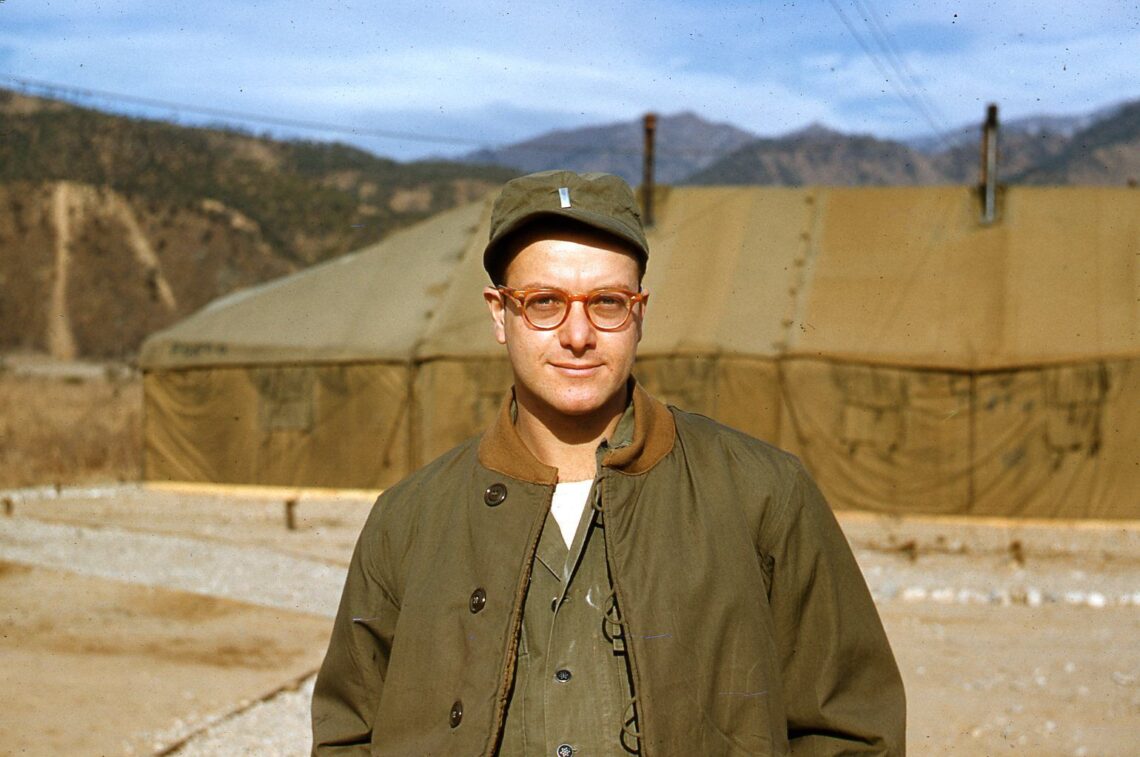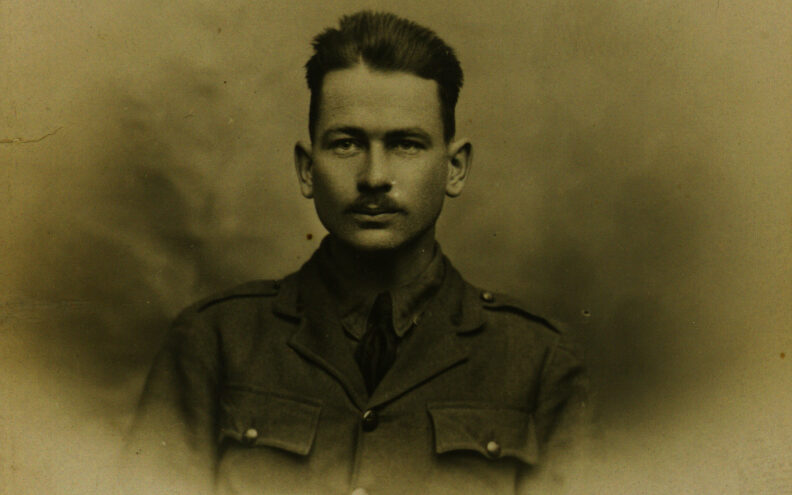-
Stories: Barbara Dannaher
Barbara Dannaher was one of tens of thousands of women who served as WAVES (Women Accepted for Volunteer Emergency Service) during the Second World War. In hundreds of naval stations across the USA, WAVES occupied roles that allowed more men to serve at sea and in combat zones. Among this work, signals intelligence would prove some of the most crucial in the war. Before the war, Barbara worked for United Aircraft in Connecticut. Her first date with her future husband, Tom, was on December 7th, 1941. By the summer of 1942, Tom was in the Marines and Barbara heard the first recruitment drive for the WAVES. Because her employer was…
-
Stories: George Brown
On August 13th, 1952, George Brown found himself standing on top of Hill 117, somewhere northeast of Seoul, Korea. Part of an offensive that began at 6AM that morning, George and the rest of Company K, 15th Regiment of the 3rd Division had achieved their objective. A peaceful quiet fell over the scene. A Chinese counterattack hit. Mortar and machine gun fire erupted around them, and George’s Sergeant screamed: his leg had been blown away. George grabbed the man from one side, while another soldier supported the Sergeant’s opposite side. The three were running for cover when another machine gun opened up. Three bullets hit the Sergeant. Three more hit…
-
Stories: Melvin Horwitz
Melvin Horwitz was in an unusual position at the start of the Korean War. Just 24, Melvin had already graduated from Harvard Medical School and had nearly completed surgical training at Yale. However, a wartime draft had been declared. Horwitze could either volunteer his medical services as an Army surgeon, or run the risk of being drafted as a rifleman, an outcome he hardly relished. Interviewer:Would you have rather stayed in America? Melvin Horwitz:Oh, sure. I’m a devout coward. They were using real bullets in Korea. But in 1952, Melvin volunteered. His basic training in San Antonio was relatively relaxed. Doctors weren’t expected to achieve a high level of martial…
-
Stories: Longshaw Porritt
CONTENT WARNING: This post includes graphic photos of wounded and dead people. Discretion is advised. One of the more varied wartime experiences in the Veterans History Project belongs to a veteran whose voice we cannot hear. Longshaw Kraus Porritt of Canton, Connecticut: one of only two veterans in the archive who served in World War One. In 1982 – nearly 20 years before the Veterans History Project was founded – Longshaw died of natural causes. While we don’t have his oral history, the archive does contains his vast collection of photographs, scrapbooks, and a written memoir. From these resources, we know that Longshaw first enlisted in the American Ambulance Field Service in March 1917, entering a war already 3 years…
-
Why the Veterans History Project Matters
Veterans Day began as a holiday to celebrate the Armistice that ended the War to End All Wars. Of course, we know now that, although the fighting stopped at 11AM on November 11th, 1918, it was far from the end of all wars. In the USA, Armistice Day was changed to Veterans Day by President Dwight D. Eisenhower after WWII. Today, it honors all American Veterans from all conflicts. It is a day when we can honor the patriotism embodied in the veteran experience. For our part, members of the Veterans History Project team have taken today to describe why this project matters to them: “The Veterans History Project is…
-
Visualizing: Women and the Veterans History Project
The United States military has never fought a war without women. From the American Revolution to the conflicts of our lifetime, women have served in recognized and unrecognized roles. With time, the work performed by American military women has expanded from support roles and medical work to direct combat. The Veterans History Project includes oral histories from some 52 women. As participants in conflicts ranging from WWII to Iraq and Afghanistan, these veterans offer a valuable perspective on women in the US military. Most veterans interviewed for the Veterans History Project participated in WWII, and the same is true for the subset of female vets. Many served specifically in the Nurse Corps, which predates WWI. Our archive also features two WASPs: Women Airforce…
-
Visualizing: Comparisons
How representative is the Veterans History Project? The 20th century saw the US military engaged in conflicts around the world. According to the U.S. Department of Veterans Affairs nearly 42 million American men and women served their country in these conflicts. From those millions of veterans, the Connecticut Veterans History Project has nearly 800 different entries. And while that may seem a small snapshot, the oral histories alone add up to nearly 1000 hours. Comparing historic statistics from the nation-wide V.A. to the Connecticut-wide Veterans History Project helps us better understand how this collection relates to the American military experience in the 20th century: By making this comparison, it’s easier to see how the Project does –…
-
Visualizing: Age at War Start
CHOOSING QUESTIONS The Veterans History Project archive contains nearly 800 oral histories from Connecticut veterans. These interviews are accompanied by written answers to some basic questions about each veteran. The transcribed answers to these questions now form a large database that we can use to quickly learn about these veterans as a group. But one crucial question was missing: How old were you when you enlisted? This question almost always came up over the course of each interview, but the answer wasn’t written down. As a result, a systematic answering of this question would involve viewing hundreds of hours of oral histories and recording the answer when (and if) it was provided. Luckily, two crucial answers were systematically recorded for each interview: What is your date of birth? What wars did you…



